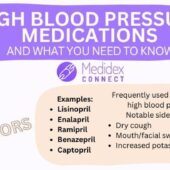Vitamin D is essential for maintaining overall health, yet many people are unaware they have low levels of this crucial nutrient. Understanding the symptoms of low vitamin D is vital for recognizing and addressing this deficiency. In this comprehensive guide we’ll cover the most common low vitamin D symptoms and how to spot vitamin D deficiency, why vitamin D is important, and how you can boost your vitamin D levels.
If you want to skip the reading but have questions about vitamin D, you can always ask a pharmacist online directly.
Why Vitamin D is Important
Vitamin D plays a crucial role in several bodily functions. It is essential for:
- Bone Health: Vitamin D promotes calcium absorption in the gut, which is necessary for maintaining strong bones and preventing osteoporosis.
- Immune Function: Adequate levels of vitamin D enhance the pathogen-fighting effects of monocytes and macrophages — white blood cells that are important parts of your immune defense — and decrease inflammation.
- Mood Regulation: Vitamin D receptors are present in areas of the brain involved in mood regulation, and low levels have been linked to conditions like depression and anxiety.
- Muscle Function: Vitamin D is important for muscle function, and deficiency can lead to muscle weakness and pain.
Common Low Vitamin D Symptoms
1. Fatigue and Tiredness
Feeling unusually tired and fatigued can be a sign of low vitamin D levels. This fatigue can be chronic and impact daily activities. Research has shown that low levels of vitamin D can lead to fatigue even in otherwise healthy individuals.
2. Bone and Back Pain
Vitamin D is essential for bone health. Low levels can cause bone pain and lower back pain. This is because vitamin D helps the body absorb calcium, and without it, bones can become brittle and painful.
3. Depression and Mood Swings
Low levels of vitamin D have been linked to depression and mood swings. This is particularly noticeable in older adults. Vitamin D supplementation has been found to improve mood in individuals with low levels of this nutrient.
4. Impaired Wound Healing
Slow wound healing can be a sign of vitamin D deficiency. Vitamin D plays a crucial role in controlling inflammation and fighting infection, which are vital for proper wound healing.
5. Hair Loss
Severe hair loss can be a sign of vitamin D deficiency. While stress is a common cause of hair loss, vitamin D deficiency has also been linked to alopecia areata, an autoimmune disease that causes severe hair loss.
6. Muscle Pain
Muscle pain can result from low vitamin D levels. This is because vitamin D is involved in muscle function, and deficiency can lead to muscle pain and weakness.
7. Increased Risk of Infections
Vitamin D is crucial for the immune system. Low levels can lead to a higher risk of infections, such as colds, flu, and respiratory tract infections.
8. Bone Loss
Vitamin D is essential for maintaining bone density. Low levels can lead to bone loss and increase the risk of fractures, especially in older adults.
9. Weight Gain
Some studies suggest that low vitamin D levels can contribute to weight gain and difficulty losing weight. This might be due to vitamin D’s role in fat metabolism.
10. Cardiovascular Issues
Low vitamin D levels have been linked to an increased risk of cardiovascular diseases, including hypertension and heart disease. Vitamin D is believed to play a role in regulating blood pressure and maintaining heart health.
Causes of Low Vitamin D Symptoms and Vitamin D Deficiency
1. Lack of Sun Exposure
The primary source of vitamin D is sunlight. Limited sun exposure, particularly in higher latitudes or during winter months, can lead to low vitamin D levels.
2. Dietary Insufficiency
Few foods naturally contain vitamin D. People who do not consume fortified foods or take supplements may be at risk of deficiency.
3. Dark Skin
Melanin reduces the skin’s ability to produce vitamin D from sunlight. Therefore, individuals with darker skin are at higher risk of deficiency.
4. Age
Older adults have a reduced ability to synthesize vitamin D from sunlight and may also spend more time indoors, increasing their risk of deficiency.
5. Obesity
Vitamin D is fat-soluble, which means it can be stored in body fat. People with higher body fat levels may have lower blood levels of vitamin D because the nutrient gets trapped in fat tissues.
6. Kidney and Liver Disease
These organs are essential for converting vitamin D into its active form. Diseases affecting the kidneys or liver can impair this conversion, leading to deficiency.
7. Certain Medical Conditions
Conditions like Crohn’s disease, celiac disease, and cystic fibrosis can affect the intestine’s ability to absorb vitamin D from food, leading to deficiency.
How to Diagnose Low Vitamin D
1. Blood Test
The most accurate way to measure vitamin D levels is through a blood test, specifically the 25-hydroxy vitamin D test. Optimal levels are generally considered to be between 30 and 100 ng/mL.
2. Symptom Check
If you experience several of the symptoms mentioned above, it may be worth discussing with your healthcare provider to determine if a blood test is needed.
Boosting Vitamin D Levels
1. Sun Exposure
Regular sun exposure is one of the best ways to boost vitamin D levels. Aim for 10-30 minutes of midday sunlight several times a week. People with darker skin may need more exposure.
2. Diet
Include vitamin D-rich foods in your diet, such as:
- Fatty fish (e.g., salmon, mackerel, and sardines)
- Egg yolks
- Cheese
- Beef liver
- Fortified foods (e.g., milk, cereal, and orange juice)
3. Supplements
Vitamin D supplements are a convenient way to increase your levels. They come in two forms: D2 (ergocalciferol) and D3 (cholecalciferol). D3 is more effective at raising blood levels of vitamin D.
4. UV Lamps
UV lamps that emit UVB radiation can help boost vitamin D levels, especially in areas with limited sunlight during winter.
Vitamin D Dosage
1. Adults
For most adults, a daily intake of 600-800 IU (International Units) of vitamin D is recommended. However, individuals with low levels may need higher doses, which should be determined by a healthcare provider.
2. Children
Children need 400-600 IU of vitamin D daily. Again, higher doses may be necessary for those with low levels.
3. Seniors
Older adults may need up to 800-1,000 IU daily to maintain adequate levels due to decreased skin synthesis and dietary intake.
Side Effects of Vitamin D
While vitamin D is crucial for health, excessive intake can lead to toxicity. Symptoms of vitamin D toxicity include:
- Hypercalcemia (high levels of calcium in the blood)
- Nausea and vomiting
- Weakness
- Frequent urination and kidney problems
It’s important to follow recommended dosages and consult with a healthcare provider before taking high doses of vitamin D supplements.
Conclusion
Low vitamin D levels can lead to a range of symptoms, from fatigue and bone pain to depression and increased infection risk. Understanding these symptoms and the factors that contribute to vitamin D deficiency can help you take proactive steps to maintain adequate levels. Regular sun exposure, a balanced diet, and appropriate supplementation are key strategies for ensuring optimal vitamin D levels. If you have any additional questions or want more information on vitamin D, you can always talk to a pharmacist online 24/7. If you suspect you have low vitamin D, consult with your healthcare provider for testing and personalized advice.
Incorporating these insights into your lifestyle can help you maintain better overall health and well-being, free from the adverse effects of vitamin D deficiency.
Disclaimer: This website does not provide medical advice. No content on this site is intended to be a substitute for professional medical advice, diagnosis, or treatment. All content on this site is for educational and informational purposes only, does not constitute medical advice, and does not establish any kind of patient-provider or client-professional relationship by your use of this website. Although we strive to strictly provide accurate and up to date general information, content available on this site is not a substitute for professional medical advice, and you should not rely solely on the information provided here. Always seek the advice of your physician or other qualified healthcare provider with any questions you may have regarding medical conditions, treatments, or medications.




















